Germany's small-caliber anti-aircraft artillery in World War II
After defeat in the First World War, the Versailles Treaty of Germany was forbidden to have anti-aircraft artillery in general, and the available anti-aircraft guns were subject to destruction. Therefore, from the end of the 20-s to the 1933, German designers worked on anti-aircraft guns secretly both in Germany and in Sweden, Holland and other countries. At the beginning of the 30-s in Germany, anti-aircraft units were also created, which were called "railway battalions" for conspiracy before 1935. For the same reason, all new field and anti-aircraft guns, designed in Germany in the 1928-1933, were called “arr. 18. Thus, in the case of requests from the governments of England and France, the Germans could answer that these were not new weapons, but old ones created as early as 1918 during the First World War.
In the early 30s, due to rapid development aviation, increasing the speed and range of flights, the creation of all-metal aircraft and the use of aviation armor, there was an acute question of covering troops from attack aircraft.
The existing anti-aircraft guns created in the years of the First World War did not meet the modern requirements for the rate of fire and the speed of aiming, and the rifle-caliber anti-aircraft machine guns did not satisfy the range and power of the action.
Under these conditions, small-caliber anti-aircraft guns (MZA), caliber 20-50-mm, were in demand. They have good rates of fire rate, effective fire range and projectile striking effect.
Anti-aircraft machine 2,0 cm FlaK 30 (German 2,0 cm Flugzeugabwehrkanone 30 - 20-mm anti-aircraft gun model 1930 of the year). Developed by Rheinmetall in 1930, the Wehrmacht began to receive guns from 1934 g. In addition, Xinmx-mm Flak 20 company Rheinmetall exported to Holland and China.
The advantages of the Flak 2 30-cm machine were the simplicity of the device, the ability to quickly disassemble and assemble, and relatively low weight.
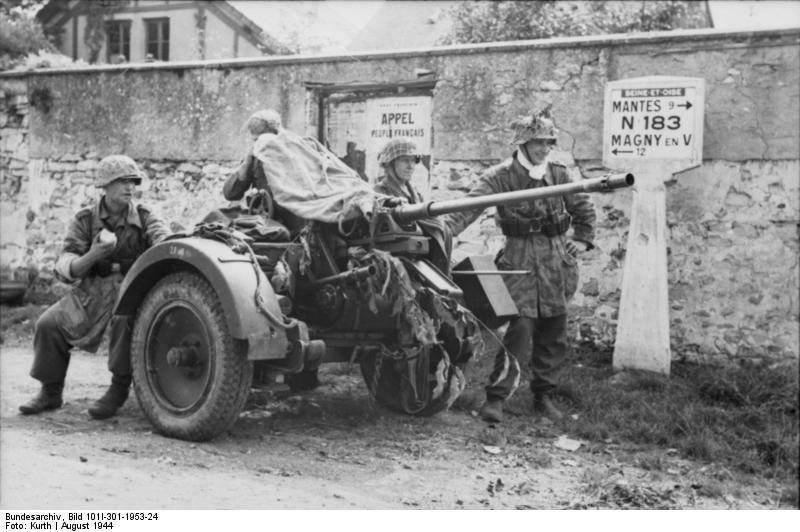
28 August 1930 an agreement was signed with the German company BJTAST (front office of Rheinmetall) to supply the USSR with other 20-mm anti-aircraft automatic cannon. All Rynmetall supplied the 20-mm anti-aircraft gun, two samples guns and one spare swinging part.
After testing 20-mm gun of "Rheinmetall" company was put into service under the name 20-mm automatic anti-aircraft and anti-tank gun obn.1930 g. Production of 20-mm cannon obr.1930 g. It was transferred to the plant №8 (Propulsion of the Moscow region ), where she was assigned the 2К index. The batch production of guns was started by the plant No. XXUMX in 8. However, the quality of the manufactured automaton turned out to be extremely low. Military acceptance refused to take anti-aircraft guns. As a result, Kalo- noyn’s breeders (No. XXNX) failed to cope gun manufacturing.
According to the results of the combat use of 20-mm Flak 30 in Spain, the company "Mauser" carried out its modernization. The upgraded model was named 2,0 see Flak 38. The new installation had the same ballistics and ammunition.
All changes to the device were aimed at increasing the rate of fire, which increased from 245 rds / min to 420-480 rds / min. It had height reach: 2200-3700 m, firing range: up to 4800 m. Mass in combat position: 450 kg, mass in the stowed position: 770 kg.
The Flak-30 and Flak-38 light automatic guns had basically the same design. Both cannons were mounted on a light wheeled carriage, which provided in a combat position a roundabout with the highest angle of elevation 90 °.
The principle of the mechanisms of the machine rev. 38 remained the same - the use of recoil force in the short course of the barrel. An increase in the rate of fire was achieved by reducing the weight of moving parts and increasing their speeds, and therefore special buffers-shock absorbers were introduced. In addition, the introduction of a copy space accelerator made it possible to combine the release of the shutter with the transfer of kinetic energy to it.
The automatic building sights of these guns produced vertical and lateral preemptions and made it possible to direct the guns directly at the target. Input data in the sights were entered manually and determined by eye, except for the distance, which was measured by a stereo range finder.
Changes in the carriages were minimal, in particular the second speed was introduced in the manual guidance drives.
There was a special, knowledgeable "pack" version for mountain army units. In this version, the Flak 38 gun remained the same, but a small and, accordingly, lighter gun carriage was used. The gun was called the 2-cm mountain anti-aircraft gun Gebirgeflak 38 and was a weapon designed to destroy both airborne and ground targets.
The 20-mm Flak 38 troops began to arrive in the second half of 1940.
Flak-30 and Flak-38 anti-aircraft guns were a very widely used air defense weapon of the Wehrmacht, Luftwaffe and SS troops. A company of such cannons (12 pieces) was part of the anti-tank division of all infantry divisions, the same company was an integral part of each motorized anti-aircraft division of the RGK, attached tank and motorized divisions.
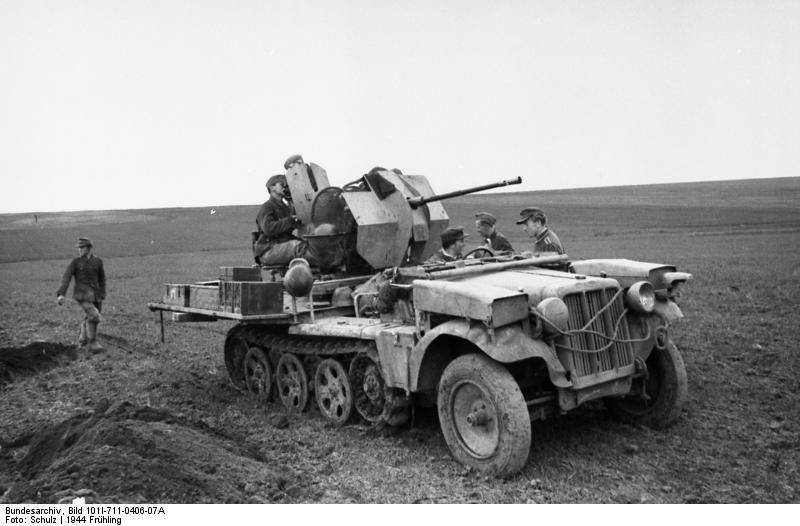
In addition to towed, it was created a large number of self-propelled guns. Trucks, tanks, various tractors and armored personnel carriers were used as chassis.
In addition to direct assignment, by the end of the war they were increasingly used to combat manpower and light armored vehicles of the enemy.
The scale of use of Flak-30 / 38 cannons is indicated by the fact that in May 1944 of the ground forces had 6 355 cannons of this type, and the Luftwaffe units providing German air defense had more than 20000-mm cannons.
To increase the density of the fire based on the Flak-38 was developed quad installation 2-cm Flakvierling 38. The effectiveness of anti-aircraft installation was very high.
Although the Germans throughout the war constantly experienced a shortage of these anti-aircraft installations. Flaquirling 38 found use in the German army, in the anti-aircraft parts of the Luftwaffe and in the German Navy.
To increase mobility, many different anti-aircraft self-propelled guns were created on their base.
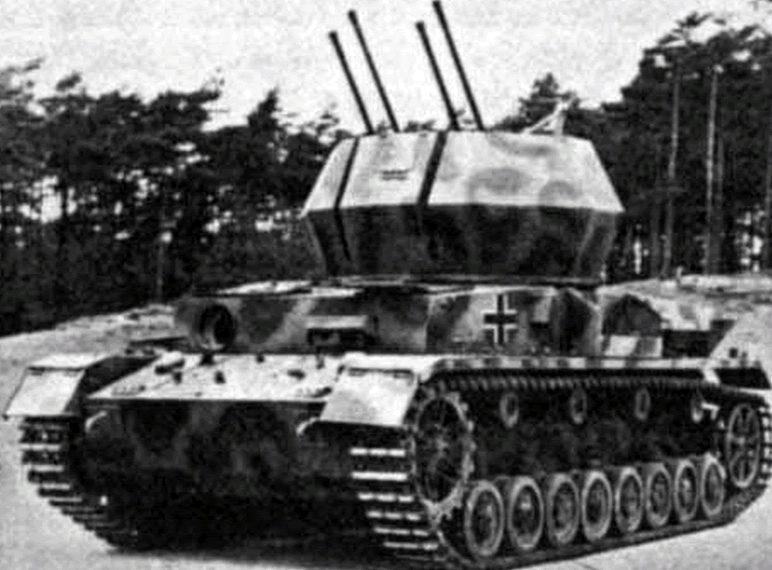
There was a version intended for installation on armored trains. An installation was being developed, the fire of which was supposed to be controlled using radar.
In addition to the Flak-30 and Flak-38 in the German air defense, the 20-mm machine gun was used in smaller quantities. 2 cm Flak 28.
This anti-aircraft gun conducts its lineage from the German "Becker gun", which was developed as early as the First World War. Firm "Oerlikon", so named by location - the suburbs of Zurich, acquired all the rights to develop a gun.
By 1927, Oerlikon developed and put on the conveyor a model called Oerlikon S (three years later it became just 1S). Compared with the original model, it was created under a more powerful cartridge 20 × 110 mm and was characterized by a higher initial velocity of the projectile in 830 m / s.
In Germany, the gun was widely used as a means of air defense of ships, but there were also field versions of the gun, which were widely used in the Wehrmacht and Luftwaffe anti-aircraft forces, under the designation - 2 cm Flak 28 и 2 cm VKPL vz. Xnumx.
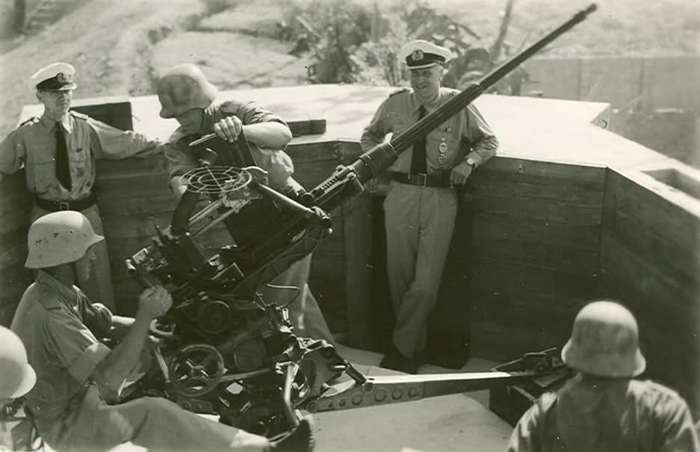
In the period from 1940 to 1944, the volume of transactions of the head company Werkzeugmaschinenfabrik Oerlikon (WO) only with the axis powers - Germany, Italy and Romania - amounted to 543,4 CHF. francs, and included the supply of 7013 20-mm guns, 14,76 million cartridges for them, 12 520 spare barrels and 40 thousand ammunition boxes (that's such a Swiss "neutrality"!).
Several hundred of these anti-aircraft guns were seized in Czechoslovakia, Belgium and Norway.
In the USSR, the word “Oerlikon” became a household name for all small-caliber anti-aircraft artillery of the period of the Second World War.
For all its merits, 20-mm anti-aircraft guns were unable to guarantee 100% penetration of the Il-2 attack aircraft.
To remedy this situation, in the 1943 year, by the firm Mauser, by imposing the 3-cm of the MK-103 aircraft cannon on the 2-cm carriage of the Flak 38 automatic anti-aircraft gun, the Flak 103 / 38 anti-aircraft gun was created. The gun had two-sided tape power. The mechanisms of the machine were based on a mixed principle: unlocking the barrel bore and cocking the bolt were carried out using the energy of powder gases discharged through the side bore in the barrel, and the feed mechanisms were operated using the power of the roll-back shaft.
In mass production Flak 103 / 38 launched in 1944 year. Total produced 371 gun.
In addition to single-barrels in a small number, twin and quad 30-mm units were produced.
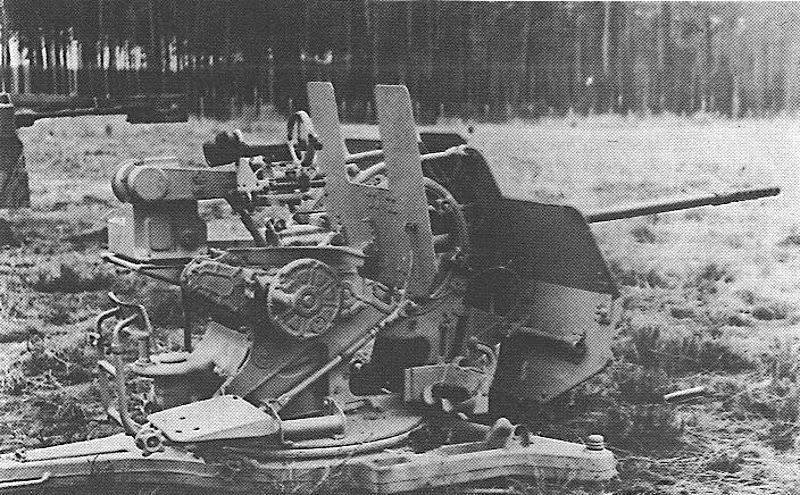
In 1942 ― 1943 The Waffen-Werke enterprise in Brun, based on the 3-cm aircraft cannon MK 103, created an anti-aircraft automatic cannon MK 303 Br. From the Flak 103 / 38 cannon, it was distinguished by the best ballistics. For a projectile weighing 320 g, its initial velocity for the MK 303 Br was 1080 m / s versus 900 m / s for Flak 103 / 38. For projectile weighing 440 g, these values were 1000 m / s and 800 m / s, respectively.
The automation worked both at the expense of the energy of the gases discharged from the bore, and at the expense of the recoil of the trunk during its short course. Valve - wedge. Sending ammunition was carried out by the rammer all the way to the movement of the cartridge in the chamber. The muzzle brake had an 30% efficiency.
Production of guns MK 303 Br began in October 1944 g. In total, until the end of the year 32 guns were handed over, and in 1945 g. - 190 as well.
The 30-mm units were much more efficient than the 20-mm, but the Germans did not have time to develop a large-scale production of these anti-aircraft guns.
In violation of the Versailles agreements, Rheinmetall began work on the 20-cm automatic anti-aircraft gun at the end of the 3,7-s.
Automatic guns worked by the recoil energy during the short course of the barrel. The shooting was carried out from the thumb carriage, leaning with the help of a cruciform base on the ground. In the stowed position, the gun was mounted on a four-wheeled wagon.
The 37-mm anti-aircraft gun was designed to fight flying at low altitudes (1500-3000 meters) by airplanes and to fight ground armored targets.
The Renemetall 3,7-cm cannon along with the 2-cm automatic cannon in 1930 were sold by the BYUTAST office to the Soviet Union. In fact, only full technological documentation and a set of semi-finished products were supplied, the guns themselves were not supplied.
In the USSR, the gun received the name "37-mm automatic anti-aircraft gun mod. 1930. Sometimes it was called 37-mm gun "H" (German). Production of the gun was started in 1931 at the plant number 8, where the gun received the index 4K. In 1931, the 3 guns were presented. At 1932, the plan was for 25 guns, the plant presented 3, but the military acceptance accepted none. At the end of 1932, the system had to be removed from production. The Red Army did not hit a single 37-mm cannon arr. 1930
3,7-cm automatic gun company "Rheinmetall" entered service in 1935, called 3,7 cm Flak 18. One of the major drawbacks was the four-wheeled wagon. It turned out to be heavy and clumsy, so it was replaced by a new four bed carriage with a separating two-wheeled drive.
3,7-cm anti-aircraft automatic gun with a new two-wheeled carriage and a number of changes in the device of the machine received the name 3,7 cm Flak 36.
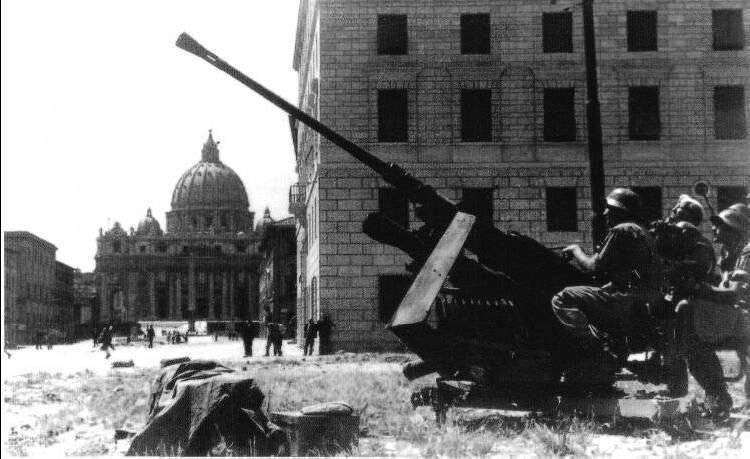
There was another option 3.7-cm Flak 37, distinguished only by a complex, controlled sight with a counter-decisive device and a proactive system.
In addition to regular gun carriages arr. 1936, 3,7-cm, Flak 18 and Flak 36, were installed on railway platforms and various trucks and armored personnel carriers, as well as tank chassis.
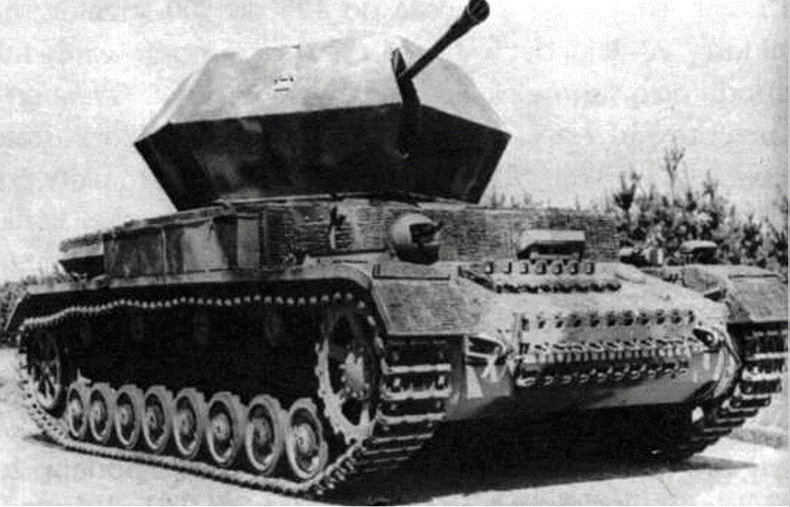
Production of Flak 36 and 37 was carried out until the very end of the war in three factories (one of them was in Czechoslovakia). By the end of the war, there were about 4000 37-mm anti-aircraft guns in the Luftwaffe and the Wehrmacht.
During the war, on the basis of 3,7 cm Flak 36, Rheinmetall developed a new 3,7-cm automatic Flak 43.
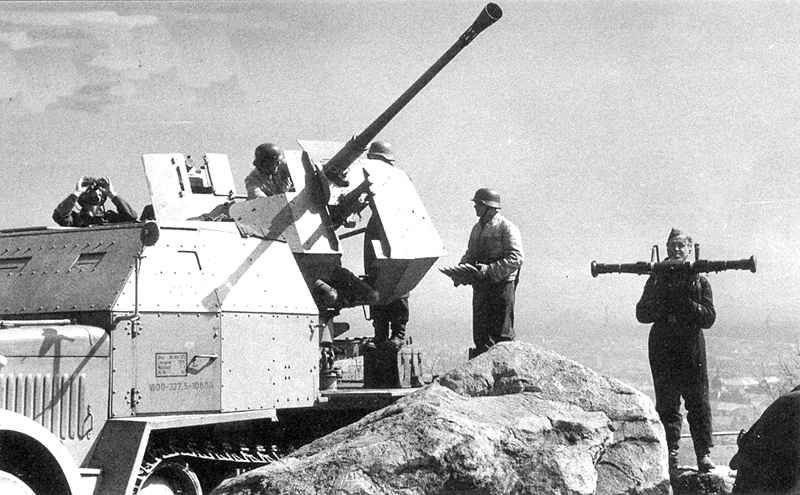
Automatic arr. 43 had a fundamentally new automation scheme, when part of the operations was carried out at the expense of the energy of the exhaust gases, and partly at the expense of rolling back parts. The Flak 43 magazine accommodates 8 cartridges, while the Flak 36 has been designed for 6 cartridges.
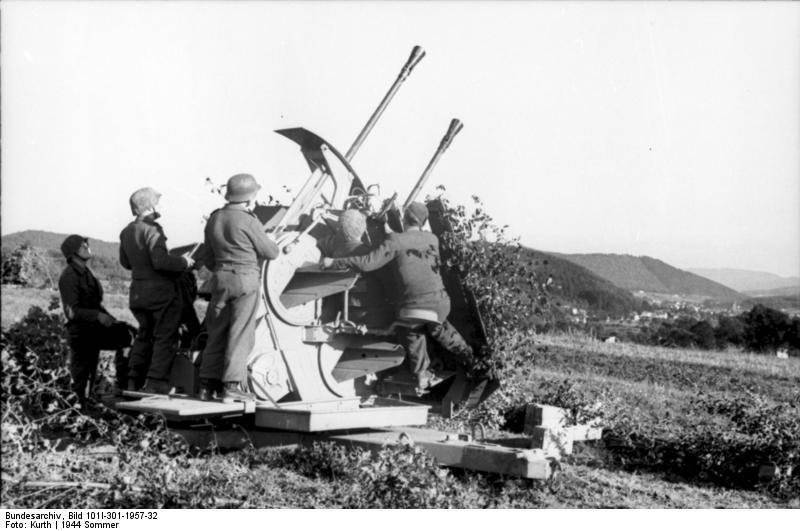
3,7-cm automaton arr. 43 installed on both single and two-gun installations.
During World War II, there was a “difficult” for anti-aircraft guns level heights from 1500 m to 3000. Here the planes were not very accessible for light anti-aircraft guns, and for heavy anti-aircraft artillery guns this height was too small. In order to solve the problem, it seemed natural to create anti-aircraft guns of some intermediate caliber.
German designers of Rheinmetall offered the military a cannon, known by the index 5-cm Flak 41.
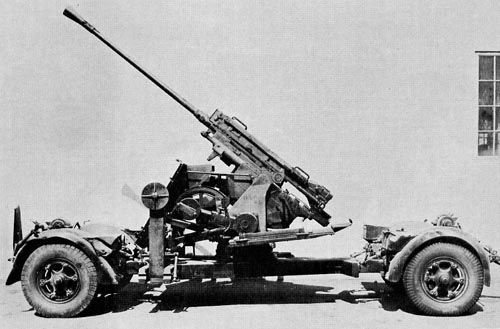
The action of automation is based on a mixed principle. The unlocking of the bore, the extraction of the liner, the throwing of the bolt back and the compression of the spring of the bolt tensioner were due to the energy of the powder gases discharged through the side bore in the barrel. And the flow of ammunition was carried out due to the energy of the rolling back barrel. In addition, partial fixed roll-out of the barrel was used in automation.
The barrel bore was locked with a wedge sliding gate. The power supply of the machine by the cartridges is lateral, on the horizontal supply table with the help of a holder for 5 cartridges.
In the stowed position, the installation was transported on a four-wheeled wagon. In the combat position both moves rolled back.
The first copy appeared in 1936. The revision process went very slowly, as a result the gun was put into mass production only in the 1940 year.
A total of 60 anti-aircraft guns of this brand were released. As soon as the first of them entered the army in 1941, major shortcomings emerged (as if they were not at the training ground).
The main problem was the ammunition, which were little adapted for use in anti-aircraft guns.
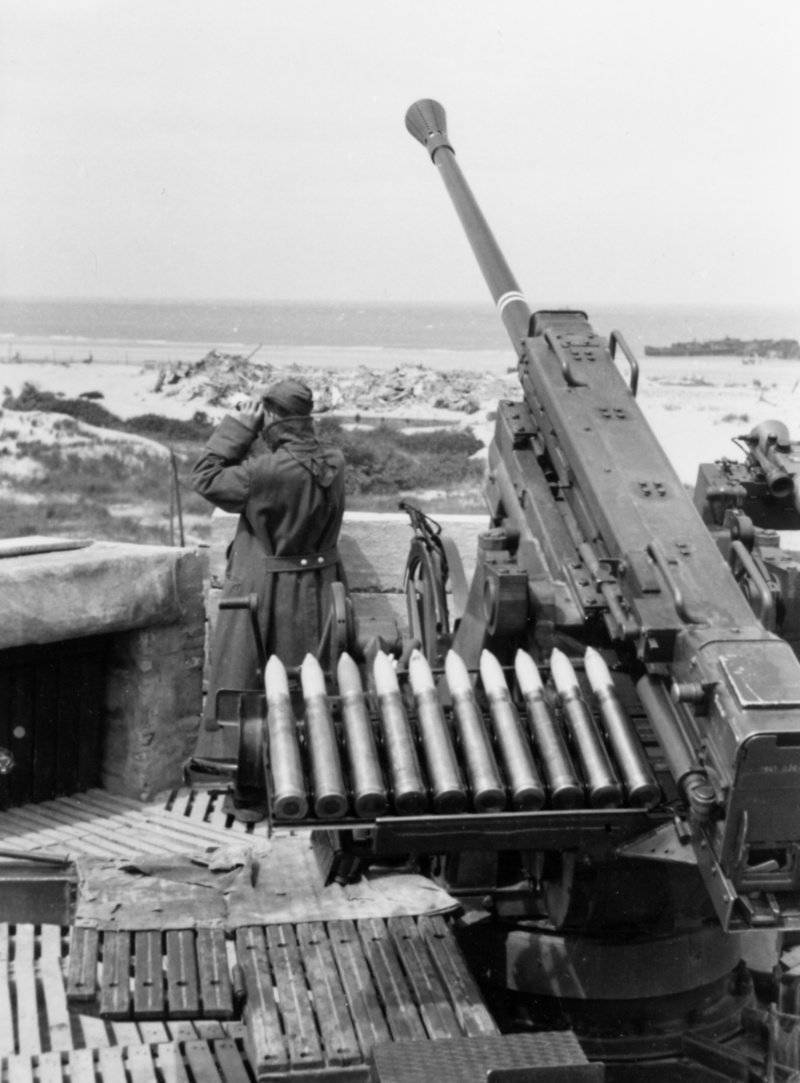
Despite the relatively large caliber, 50-mm shells did not have enough power. In addition, the flashes of shots dazzled the gunner, even on a clear sunny day. The carriage was too bulky and inconvenient in real combat conditions. The horizontal guidance mechanism was too weak and worked slowly.
Flak 41 is available in two versions. The mobile anti-aircraft gun moved on a biaxial gun carriage. The stationary gun was intended for the defense of strategically important objects, such as the Ruhr dam. Despite the fact that the gun turned out, to put it mildly, unsuccessful, it continued to serve until the end of the war. True, by the time they left the entire unit 24.
It is fair to say that the guns of this caliber have not been created in any of the belligerent countries.
The anti-aircraft 57-mm C-60 was created in the USSR by VG Grabin after the war.
Assessing the actions of the German small-caliber artillery, it is worth noting its exceptional efficiency. The anti-aircraft cover of the German troops was much better than the Soviet, especially in the initial period of the war.
It was the anti-aircraft fire that destroyed most of the IL-2 lost for military reasons.
The high losses of IL-2 themselves should be explained, first of all, by the specifics of the combat use of these attack aircraft. Unlike bombers and fighters, they worked exclusively from low altitudes - and therefore, more often and longer than other aircraft, they were in the realm of fire of German small-caliber anti-aircraft artillery.
The extreme danger that German small-caliber anti-aircraft guns posed to our aviation was caused, firstly, by the perfection of the material part of this weapons. The design of anti-aircraft installations made it possible to very quickly maneuver the trajectories in the vertical and horizontal planes, each gun was equipped with an artillery anti-aircraft fire control device, which gave corrections to the speed and course of the aircraft; tracer shells facilitated the adjustment of fire. Finally, the German anti-aircraft guns had a high rate of fire; Thus, the 37-mm installation Flak 36 produced 188 shells per minute, and the 20-mm Flak 38 - 480.
Secondly, the Germans had a very high saturation of the troops and air defense units of the rear facilities. The number of barrels covering the objects of the Il-2 attacks increased continuously, and at the beginning of 1945 an attack aircraft operating in the German fortified area could be released per second (!) To 200 — 250 20– and 37-mm projectiles.
The reaction time was very short, from the moment it was detected to the opening of fire. The first accurate shot of a small-caliber anti-aircraft battery was ready to give within 20 seconds after the discovery of Soviet aircraft; The Germans injected the corrections for the change in the course of the Il-2, the angle of their dive, speed, distance to the target for 2 — 3 seconds. Their concentration of the fire of several guns on the same target also increased the probability of hitting
Based on:
http://www.xliby.ru/transport_i_aviacija/tehnika_i_vooruzhenie_1998_08/p3.php
http://zonawar.ru/artileru/leg_zenit_2mw.html
http://www.plam.ru/hist/_sokoly_umytye_krovyu_pochemu_sovetskie_vvs_voevali_huzhe_lyuftvaffe/p3.php
A.B. Wideograd "God of War of the Third Reich"
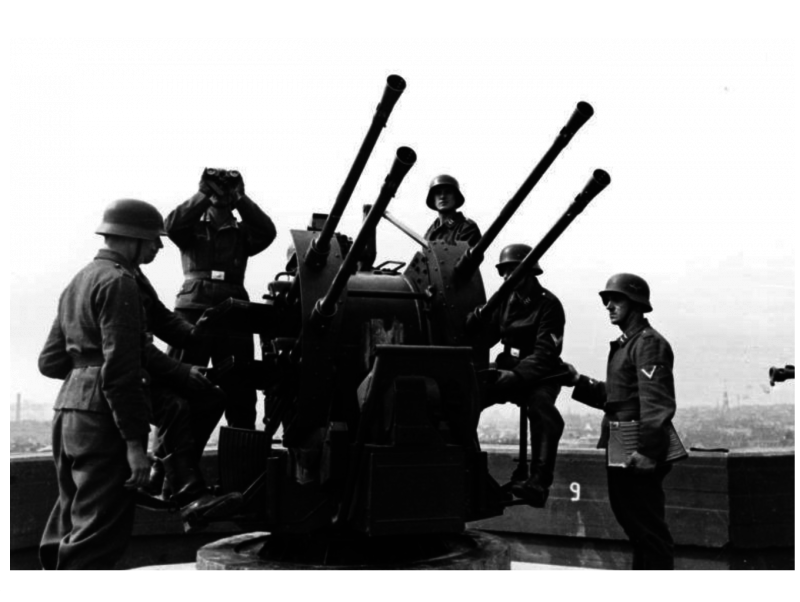
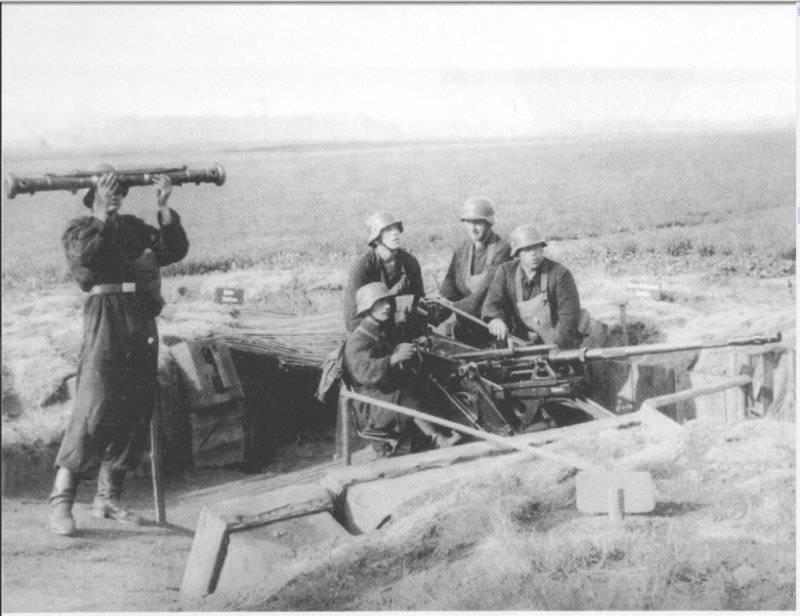
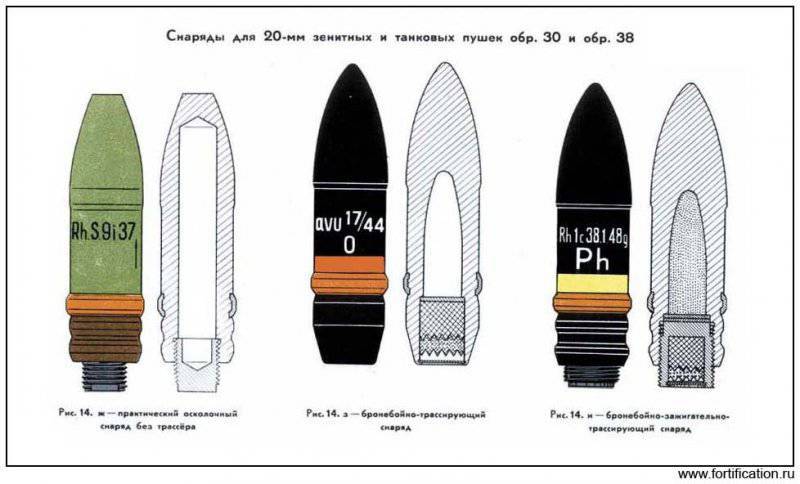
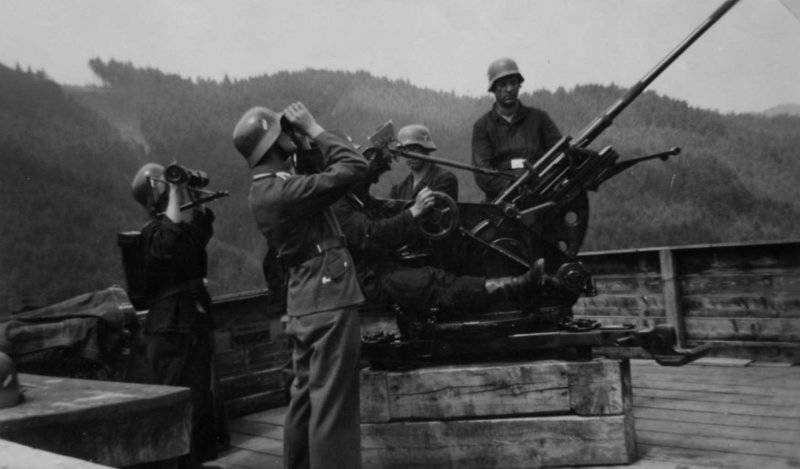
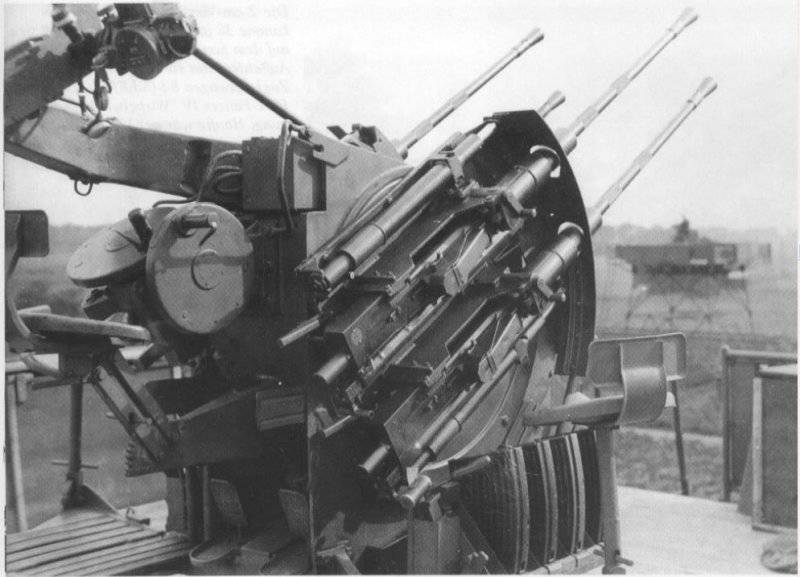
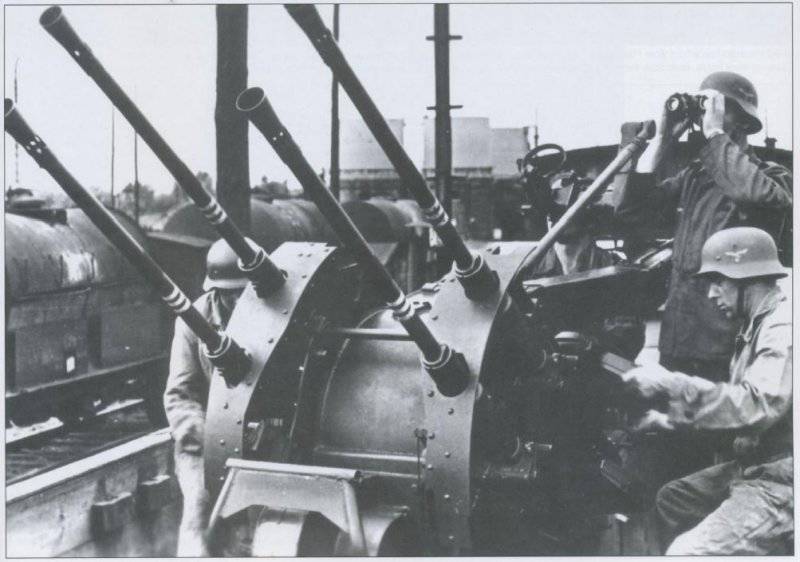
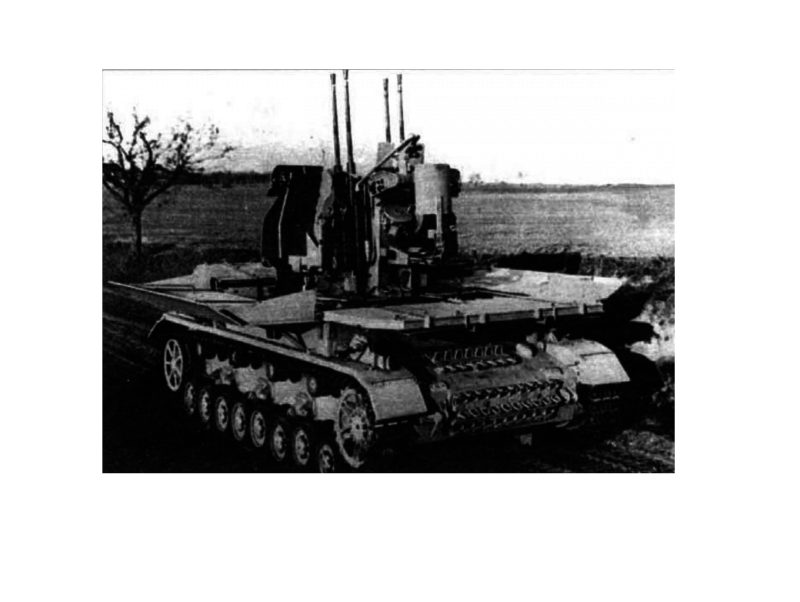
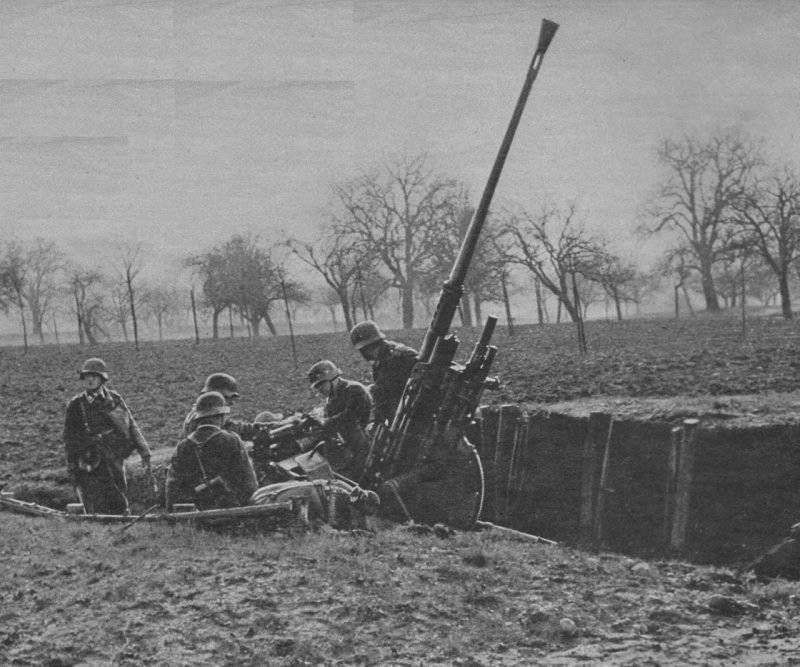
Information